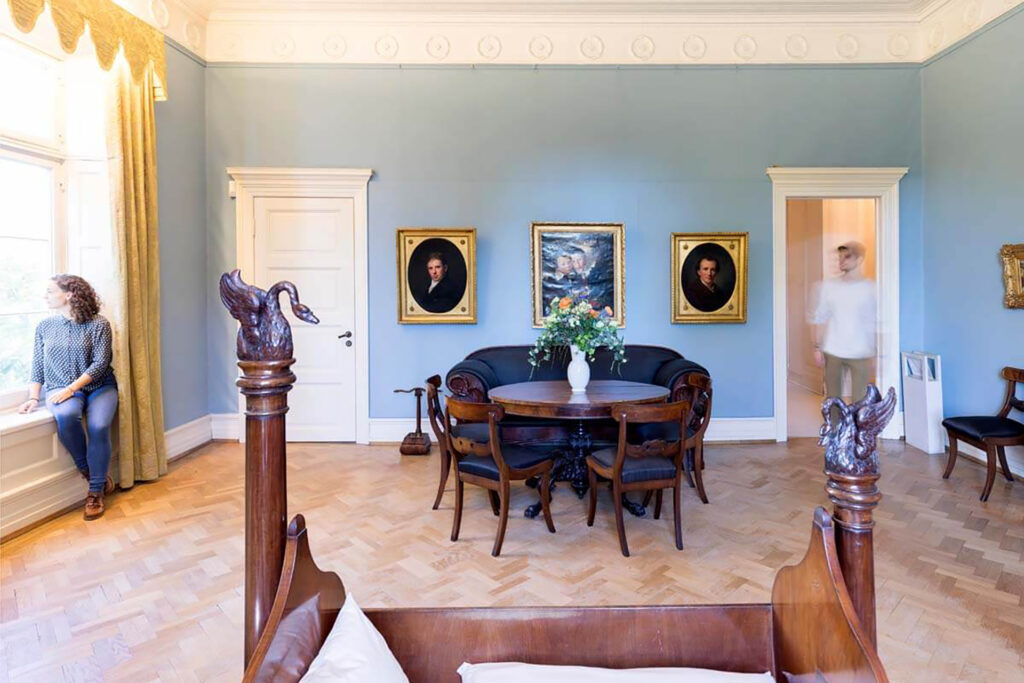Permanent exhibitions AT JENISCH HOUSE
The Jenisch House is the former country house of Hamburg Senator Martin Johann Jenisch (1793 – 1857). Built between 1831 and 1834 according to plans by Franz Gustav Forsmann and Karl Friedrich Schinkel, the Jenisch House is a significant monument to neo-classical architecture. It is distinguished by its villa style architecture and its location in the park as well as its wide variety of room designs boasting style elements from baroque to Biedermeier.
The White Hall
The large hall to the left of the entrance hall originally served as a grand dining room. Its walls and ceilings are decorated with ornamental plasterwork. Three full-length windows open up to the east with a view of the park. The parquet flooring is part of the original fittings as well. The chandelier was designed by Karl Friedrich Schinkel and comes from a stately home in East Holstein. The simple stove standing in the corner of the room is also part of the original fittings.
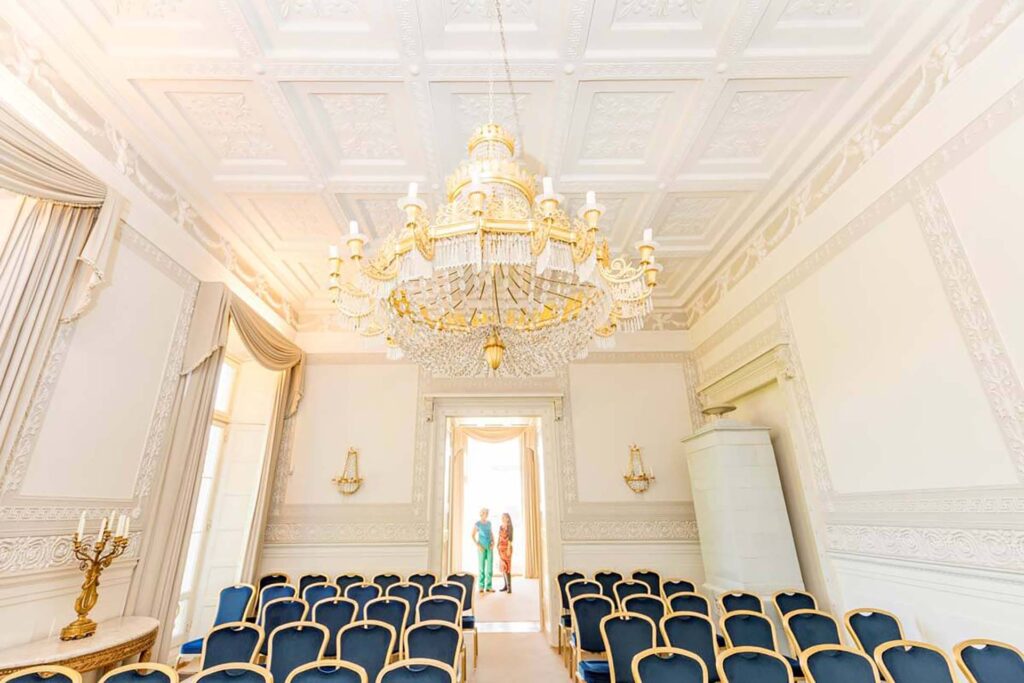
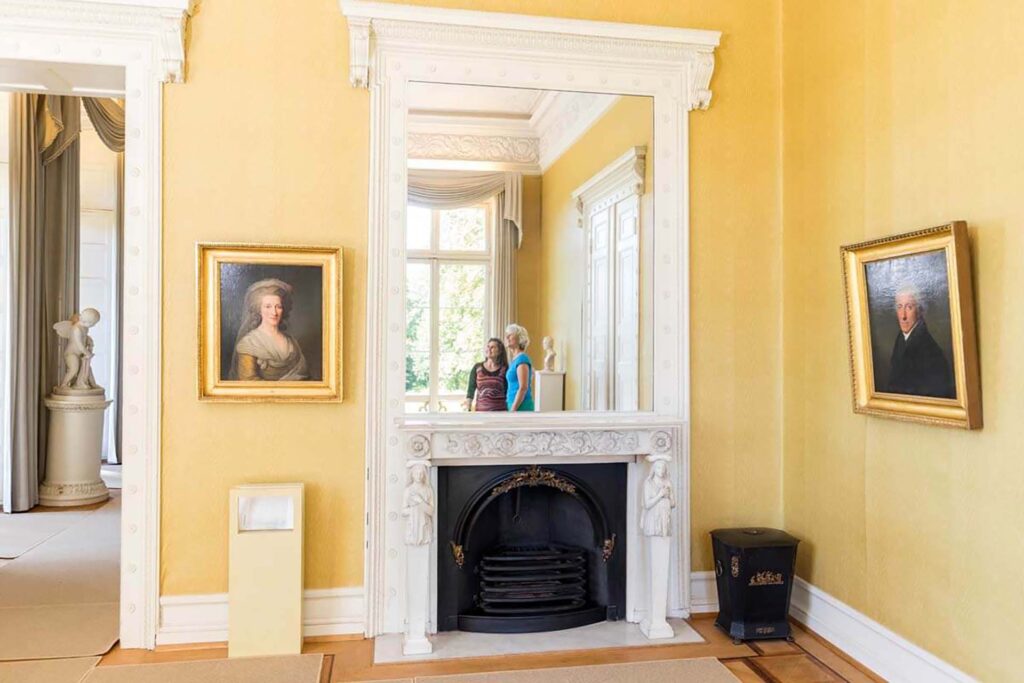
The Jenisch Room
This room, probably originally designed as a tea parlour or reading room, is now furnished with articles associated with Caspar Voght and Martin Johan Jenisch. It has two full length windows, one looking south towards the Elbe and the other eastwards to the park. The parquet floor was laid according to a design by the architect Franz Gustav Forsmann (1795 – 1878). Square panels of oak parquet frame the central area which is also square in shape. The inlaid circular motif with palms, wreaths and ribbons is partly formed by coloured pieces of wood and decorative nails.
The Lower Elbe Room
The three almost room-height windows in this room open out into the portico on the south side of the house. This allows people to step out onto the terrace or even down the stone steps to the park, so it is also described as the Garden Room. The fittings in the room are mainly from the time of the French Empire (around 1800) The group of seats with black lacquered and gilded wood in the middle of the room was originally in the house belonging to Georg Friedrich Baur on Palmaille in Altona. The chairs with the sphinx figures on the arm rests and curved back are based on a design by Percier & Founaine, important architects and interior designers of the Empire style in Paris.
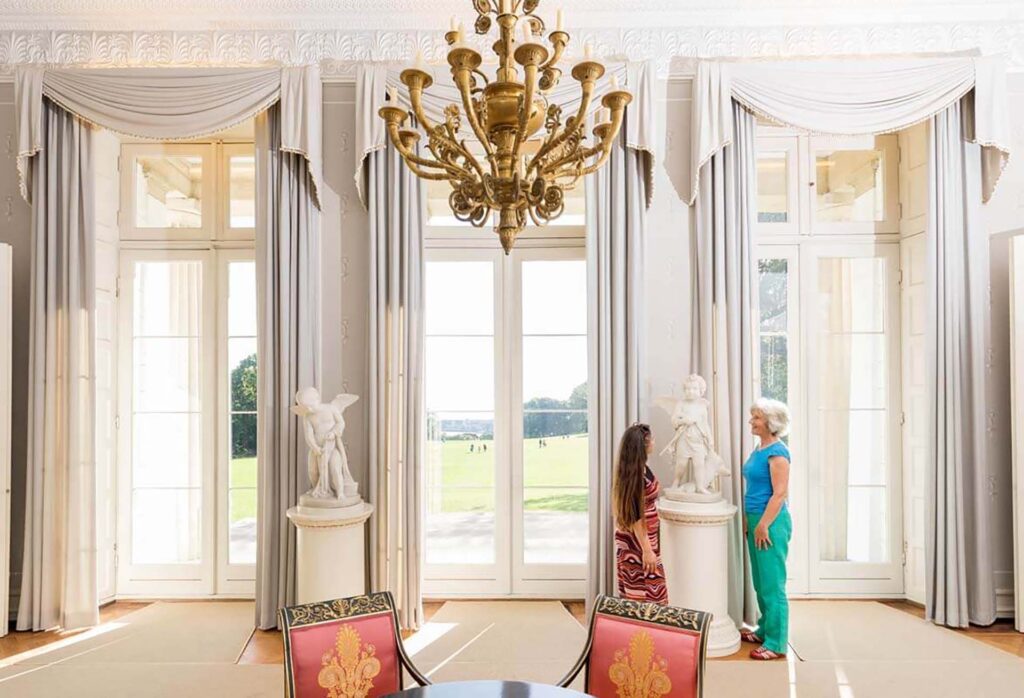
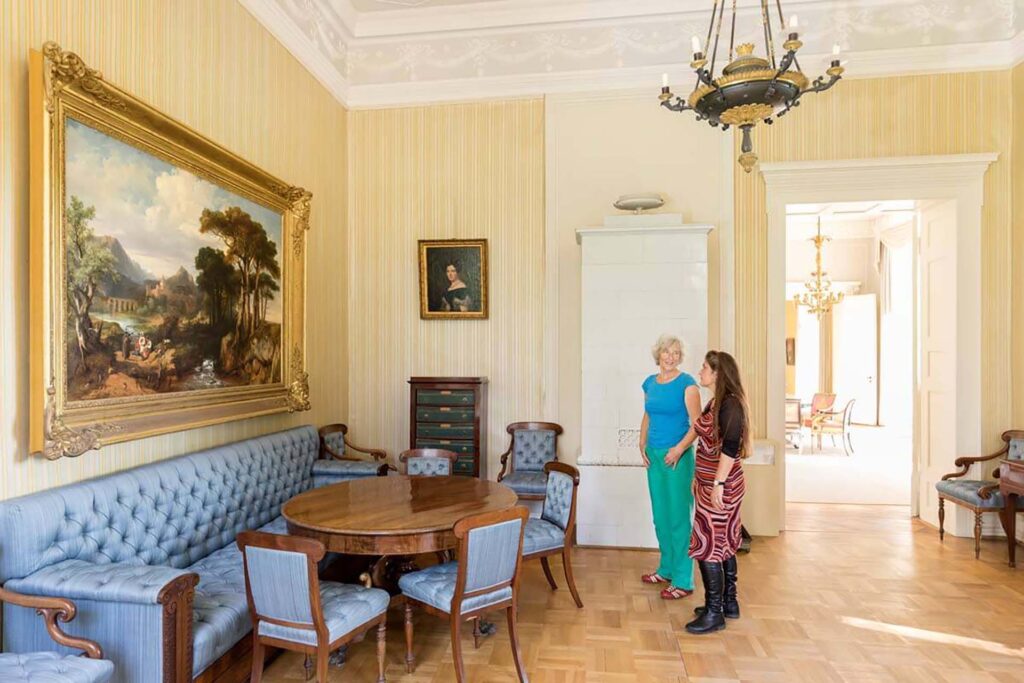
The Music Room
This room is furnished with musical instruments appropriate for its original purpose. Taking pride of place is the unique Erard fortepiano from the year 1838 which was kept in excellent, playable condition by Prof. Andreas Beurmann. A music stand with an adjustable tray for sheet music is placed right next to it. Above a square piano there hangs a photograph of Candida Höfer (born 1944), mirroring the view out of the window to the Elbe. On the other wall there is a portrait of Alice Boué (nee Parish) (1766 – 1837) by Jean-Laurent Mosnier (1743 – 1808).
Exhibition about Caspar Voght (1752 – 1839)
The west wing of the first floor is dedicated to a permanent exhibition about the life and work of Caspar Voght. This Hamburg merchant, together with his friend and business partner Georg Sieveking (1751-1799) controlled one of the largest trading companies in Hamburg in the second half of the 18th century. Voght was also a key figure as society developed in the Hansa town around 1800. His commitment to social, cultural and scientific projects saw him taking a pioneering role which, so far, has received too little recognition in research into the enlightenment and the history of this city. One of his most significant reform projects was to set up a model farm based on English examples. This model farm formed the core for the English landscape garden that has been kept to this day, now known as the “Jenisch Park”, named after the Hamburg Senator Martin Johan Jenisch (1793-1857), who bought the land from Voght in 1828. Jenisch built his summer house there between 1831-1834 – the Jenisch Haus.
The reform of the Hamburg poor relief and prison system in the year 1788 was also due to Voght’s great efforts, which brought him recognition throughout Europe and included praise from the Prussian King and Emperor Franz II, who awarded him the title of Reichsfreiherr (imperial baron) for his services.
In Hamburg he was a dedicated supporter of the theatre – something which is hardly known today – he was also enthusiastic about literature and art and was a keen supporter of developing the education system.
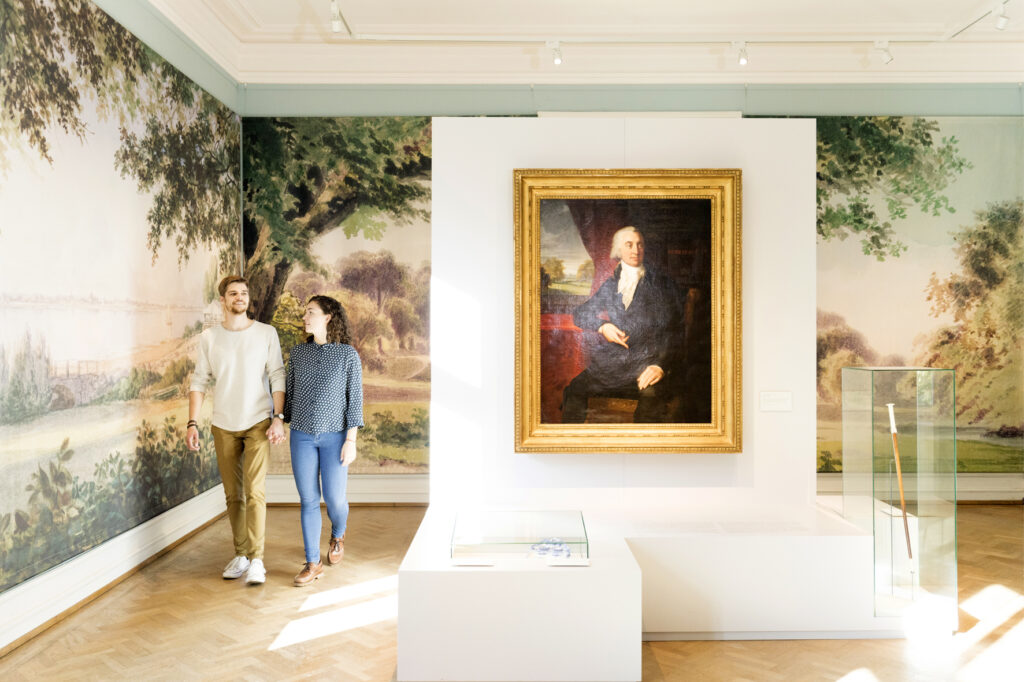
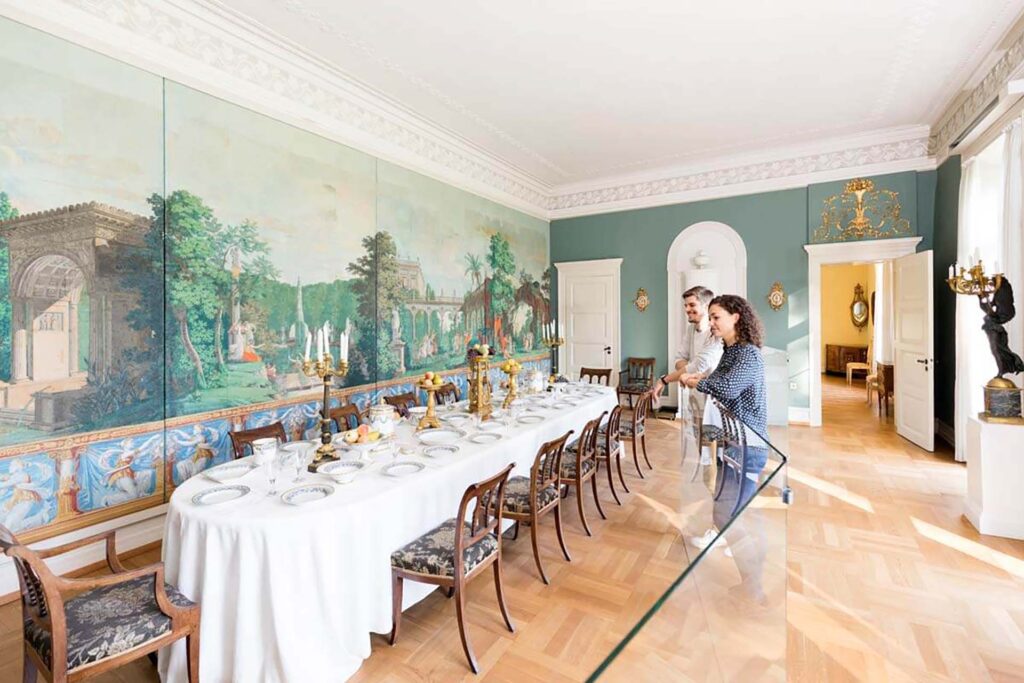
The Upper Elbe Room
The room above the Lower Elbe Room was the former study or smoking room of Marin Johan Jenisch the Younger. This is where he withdrew when he wanted to escape from his visitors. The fittings are not actually original. The large group of furniture in the middle consists of an extendable table with sturdy lion’s feet, ten chairs and two armchairs. The table, which came from a Schleswig-Holstein stately home, dates from 1830 to 1840 and can be extended from its original 128 cm circumference to a length of approx. 470 cm by adding its eight leaves. The leaves – like the chairs and armchairs – are made of mahogany with light decorative marquetry work.
The Altonaer Room
This room was also originally one of the Jenisch family’s private rooms. One of its windows looks out onto the south side of the park. The room has now been fully furnished with so-called Altonaer furniture. This can be identified by means of the customs duty exemption stamps (Altonaer Fabrik Waren Stempel) made of sealing wax which are to be found on the back or underside of the furniture. Between 1766 and 1839, under Danish King Christian VII and Friedrich VI, this stamp permitted duty free exports to the Duchies of Holstein and Schleswig and to Denmark.
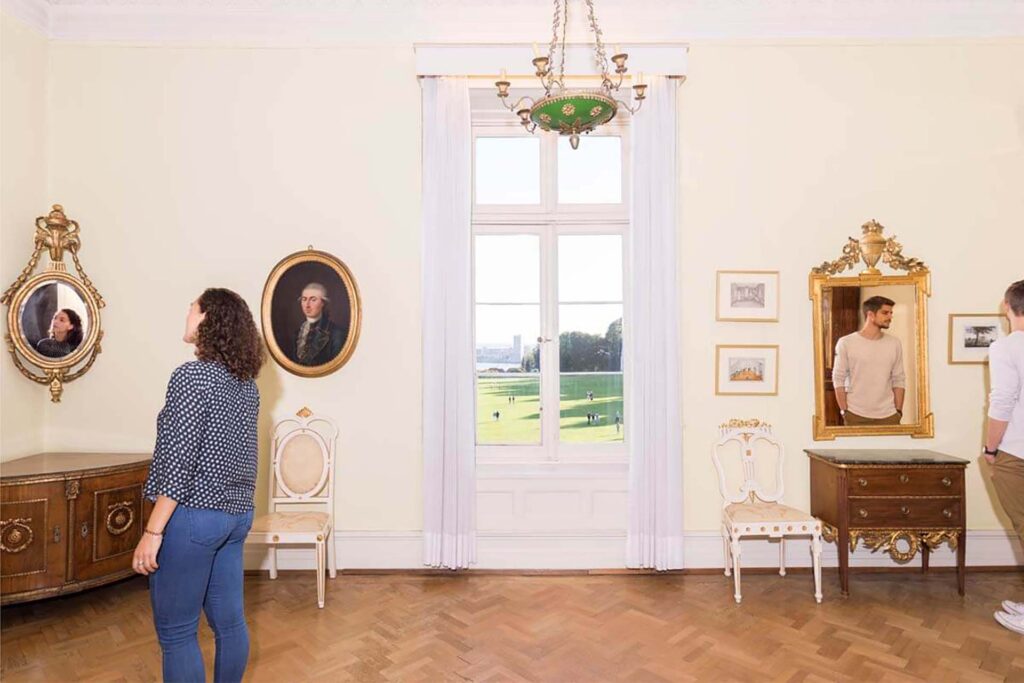
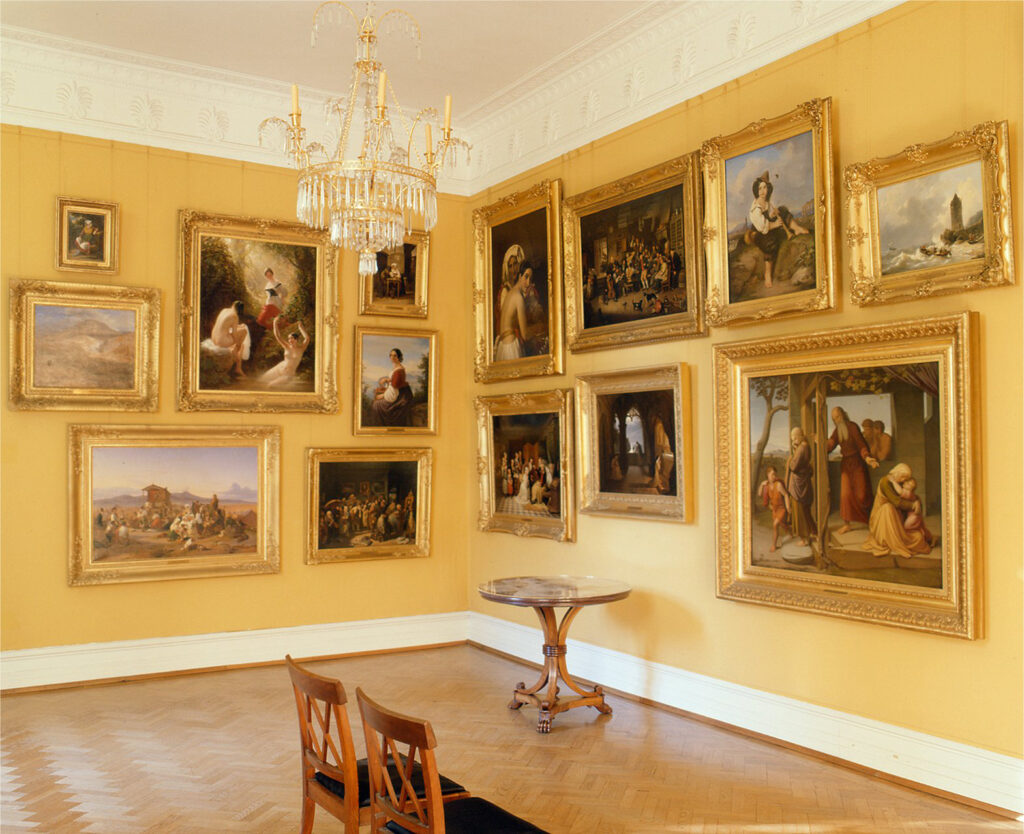
The Jenisch Gallery
This space, used by the Jenisch family as their private appartment, now contains one of the few private upper middle-class collections of paintings in Germany, which has been kept together unchanged. From 1831, Jenisch was the Director of the Hamburg Kunstverein selection committee. Exhibited here you will find typical paintings in line with upper middle-class tastes of the 19th century. The genres range from landscapes to historic and religious paintings.
The Biedermeier Room
Originally used as a guest room for the Jenisch family’s visitors, this room has two windows to the north and the east. Today it is furnished as a late Biedermeier drawing room with furniture of the time, which were almost all manufactured in Altona using mahogany veneer, a typical material in this coastal region at the time.
